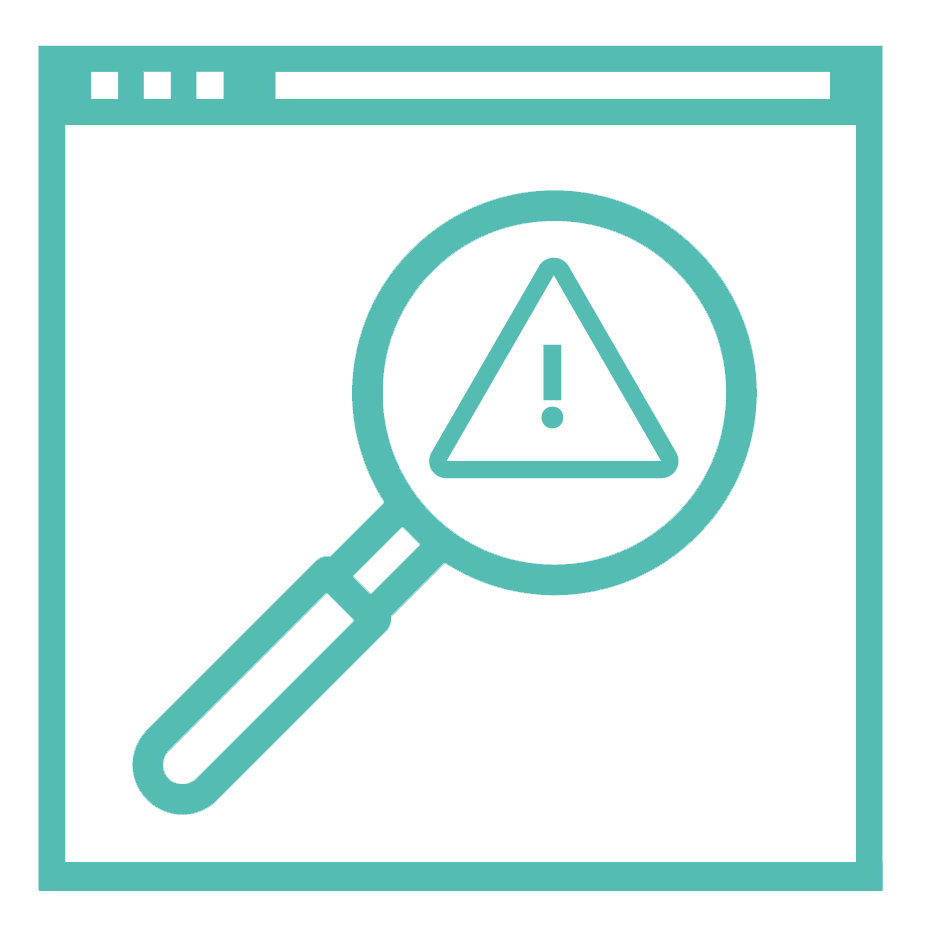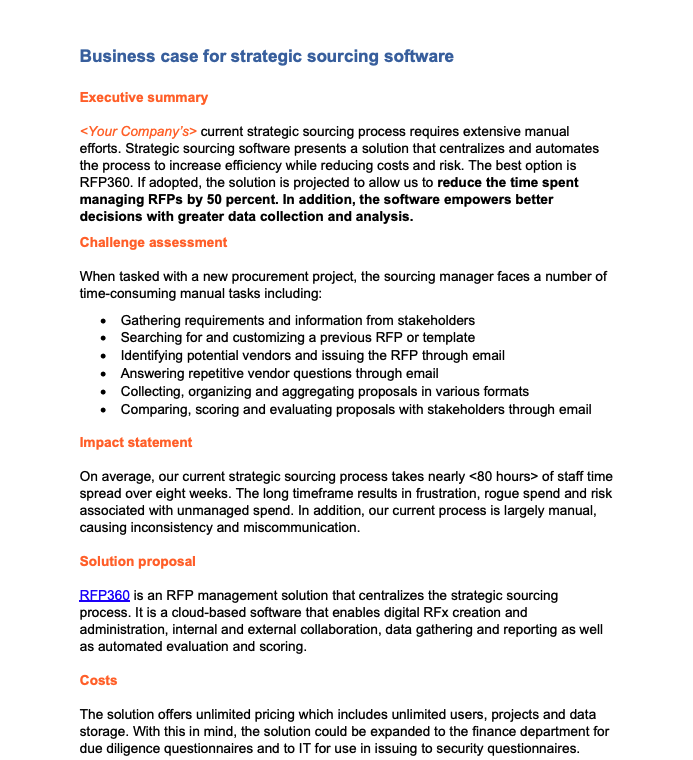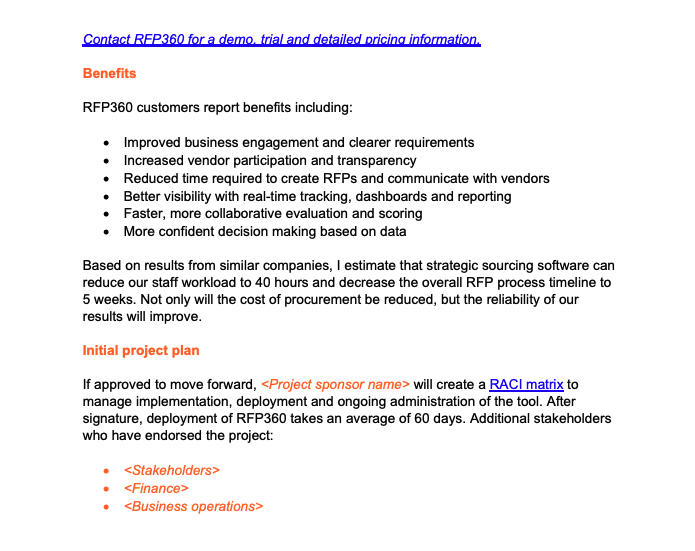For procurement teams that want to improve vendor relationships and reduce costs, strategic sourcing is a natural fit. Likewise, when those same procurement teams need a way to improve efficiency and effectiveness, strategic sourcing software saves the day. Indeed, as businesses embrace digital transformation, there are countless tools available that promise to make procurement easier. Admittedly, it can be a challenge to find the best solution.
Fortunately, this post can serve as your strategic sourcing software guide. In it we’ll explore some basic information about what strategic sourcing is and the technology that helps procurement teams manage the process. Then, we’ll discuss some of the benefits of leveraging a strategic sourcing solution and five key features to look for. Finally, we’ll provide a business case for strategic sourcing software to help you win buy-in from your business.
- Everything you need to know about strategic sourcing software
- How to find the right solution
- 5 features to look for in a strategic sourcing software solution
- The business case for strategic sourcing software
Download the strategic sourcing software business case template here.
Everything you need to know about strategic sourcing software
Strategic sourcing software is an investment. As with any purchase, it’s important to first understand the problem. Then, evaluate your business’s needs, research the topic and, finally, explore available options. Here you’ll find background information about the practice of strategic sourcing. In addition, I’ll offer an overview of strategic sourcing software functionality and benefits.
What is strategic sourcing?
Strategic sourcing is a proactive approach to procurement that focuses on vendor partnerships. The goal of the practice is to reduce costs while creating efficiency and reducing risk. Often, strategic sourcing results in long-term, mutually beneficial vendor relationships.
Consequently, vendor management and strategic sourcing are closely linked. In fact, strategic sourcing is often considered a part of vendor management, and for good reason. Because of the focus on finding the right long-term partner, strategic sourcing is the natural first step in successful vendor management.
The difference between vendor selection and strategic sourcing
So, how is strategic sourcing different from ordinary vendor selection? Typically, traditional vendor selection is often reactive and may focus on one single factor, like cost or qualifications. On the other hand, strategic sourcing is more complex. The practice is proactive and evaluates many big-picture considerations to provide long-term benefits. For example, strategic sourcing takes into account not just the buyer’s needs, but also the seller’s needs. In addition, it evaluates the vendor’s ability to serve the business in the future, their industry expertise, the competitive landscape and so on.
An article from the Chartered Institute of Procurement and Supply (CIPS) discusses the need for more vendor information saying,
“Companies are getting more spend under management by gathering increasing amounts of data from suppliers, going beyond price to make award decisions that more closely reflect identified business objectives and even re-analysing decisions using data from past events.”
To explore the practice of strategic sourcing in more detail, check out this blog: Strategic sourcing guide: 7 steps and best practices.
The benefits of strategic sourcing technology
Time savings
Strategic sourcing software saves time by centralizing templates, project management, RFx issuing and evaluation, vendor communication and reporting. That means no more wasted time digging through your inbox to find vendor questions, old RFPs and proposals and stakeholder input. Certainly, moving the procurement process from email, Word and Excel into a single location creates a reliable single source of truth for the entire RFP process.
Data-driven decisions
Analyzing RFP data has always been a part of the procurement process. However, in the past, it has largely been a time-consuming, manual process. Luckily, RFP software used for strategic sourcing empowers more efficient data collection, analysis and reporting.
The strategic sourcing process relies on gathering detailed information from potential vendors. RFP questions often don’t have a single right answer, but instead ask for more nuanced insights. Before technology, the process of evaluating vendor responses to these questions was inconsistent and highly subjective. However, strategic sourcing software empowers evaluators to score questions individually, collaborate with colleagues, compare offers side by side and assign weighted scores to prioritize their needs.

From supplier evaluation to trend analysis, the data collected from strategic sourcing software can uncover a wealth of business intelligence. In addition, the data extracted from the RFP process yields helpful dashboards, real-time reports and procurement process insights.
Improved procurement processes
Using the readily available data from strategic sourcing software, procurement teams can easily explore the success and efficiency of the RFP process. For instance, RFP data can tell you how often vendors need clarification on certain questions. If you can identify a section of the RFP that vendors struggle with, then you can proactively provide more information to streamline the process. The result? Happier vendors, clearer proposals and less time spent communicating with each vendor.
Along with process insights, strategic sourcing software delivers value by centralizing the procurement process. With RFP creation, administration and evaluation tools in a single platform, the process is more consistent and streamlined.
Reduced risk and cost
Naturally, an optimized process reduces the cost of procurement. However, with strategic sourcing software, not only do procurement projects require fewer staff hours, but the results are more reliable. As sourcing managers and proposal professionals interact in the same digital platform, the process becomes more collaborative and transparent.

Therefore, strategic sourcing reduces the risk of making the wrong selection, trapping you in a bad vendor relationship. So, in theory, strategic sourcing software should reduce the overall need for and frequency of RFPs.
How to find the right solution
There are many different sourcing solutions available, so it’s important that you invest in the right one. Luckily, selecting a strategic sourcing software is similar to any other procurement project, so you’re already well equipped to find the right solution. However, to help guide you, below you’ll find the basic steps we recommend when seeking a new software tool.
- Research the market
Explore the options that are available and determine what functionality will deliver the most value to your procurement team. There are an astounding range of procurement tools available. From simple e-RFP issuing and vendor management to spend management and contract management, the options are endless.
- Collaborate to identify the problem and ideal solution
Discuss the challenges with sourcing managers. What part of the strategic sourcing process takes the most time and manual effort? What would the ideal solution look like?
- Define scope (and stick to it)
Based on feedback from stakeholders, determine what functionality is required, what would be nice to have and what is not needed. Depending on your budget, you may consider a platform that offers basic functionality for a wide variety of needs, or you may consider a solution that delivers quick time-to-value and specializes in strategic sourcing.
- Create and issue the RFP
Remember to include as much background as possible about the problem you’re trying to solve and your current state. This information will help vendors create a customized solution that meets your needs. Generally, it’s best to try to keep the RFP short and focused. This will make the evaluation stage much easier.
- Evaluate your options
Invite stakeholders to engage in the evaluation process. Score your proposals and select a vendor. Remember, if the outcome is still unclear, weighted scoring can make selecting a winner much easier.
5 must-have features to look for in a strategic sourcing software solution
1. Requirements and discovery tools
To write an effective RFP, you must know what problem your client or project stakeholder needs to solve and how they want to solve it. Consequently it’s wise to look for a platform that enables you to easily collect background and requirements both from internal and external teams. With this information you can build a customized and effective RFP. In addition, the information is stored for future reference.
2. Flexible RFx functionality
Maximize your return on investment (ROI) by exploring additional use cases. For example, any RFP management software should also be able to issue requests for information, requests for qualifications and requests for quotations. In addition, consider if the solution can manage vendor due diligence, security questionnaires and vendor profiles.
3. Vendor collaboration tools
Strategic sourcing software should give your inbox a break. So, be sure to select a solution that centralizes communication with vendors, allows individual and group messaging. Generally, these features can also serve as a place for initial negotiations.

4. Automated scoring and evaluation
Say goodbye to that old copy-and-paste process. The best strategic sourcing platforms do all the heavy lifting and make comparing vendors easy. Look for pricing tables, automated weighted scoring, side-by-side comparisons, historic reporting and proposal reports. Additionally, the ability to invite individual evaluators and stakeholders, as well as teams, to review and score sections as well as responses is incredibly valuable.
5. Vendor support
To get the most value out of a strategic sourcing platform, your vendors must also adopt the solution. Therefore, ensure that the platform you choose is not only easy to use, but also provides a customer success team to enable vendors. Ideally, the solution should offer both self-serve help tools as well as complimentary user support.
Business case for strategic sourcing software
Unfortunately, the importance of efficient and effective strategic sourcing isn’t always apparent to those outside of the procurement department. Luckily, a solid business case can help persuade executives of the value of investing in strategic sourcing technology.
Your business case should quickly provide information about the problem you’re facing, the proposed solution as well as the expected return on investment. Remember, while your business case needs to be thorough and compelling, it also needs to be brief.
7 sections to include in your sourcing software business case:
- Executive summary: Overview of the business case
- Challenge assessment: Details and background about the problem
- Impact statement: Inefficiency or risks of current process
- Solution proposal: Summary of how strategic sourcing software will help
- Budget: Expected costs
- Benefits: Anticipated outcomes and goals of the project
- Initial project plan: Timeframe for adoption and time-to-value estimate
Example and template
To help you get started, I’ve provided a strategic sourcing software business case example and template. This example includes ROI figures that are reflective of our customers’ experiences.
You can use this example to inspire your own business case, or download it as a template.
Ultimately, connecting your business with partners that are invested in your success is what strategic sourcing is all about. Likewise, when considering a strategic sourcing software solution, pick a vendor who will partner with you, empower your growth and share their vision for the future.


